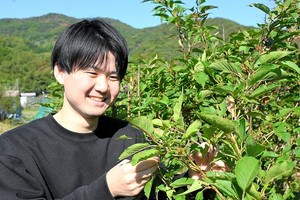By LISA VOGT/ Special to Asahi Weekly
April 23, 2024 at 08:00 JST
Does happiness and joy lie within or without? The correct answer, we can guess, is that it lies within each of us. “What is essential is invisible to the eye,” said a tiny prince somewhere, right?
Centuries before the Tokugawa Shogunate united Japan in 1603 and relative peace descended upon the land, as with just about every country on our planet, there was a period of warmongering where bloodshed, treachery, revenge, decapitation and other unholy things were not uncommon. Within this backdrop, Fujiwara no Kiyohira (1056-1128), a samurai in the late Heian Period, did something few others could imagine. He created temples, gardens and pagodas representing Jodo--a Buddhist Pure Land.
Oh, I’m getting ahead of myself. There are five UNESCO World Heritage sites in Hiraizumi, Iwate Prefecture, all commissioned by three generations of the Oshu-Fujiwara clan who ruled the Tohoku area in the 12th century.
The Fujiwara dynasty was wealthy and powerful, but family members were killed due to traitorous plots, and Kiyohira decided to put an end to the cycle of violence. He initiated projects to create a Heaven on Earth where everyone--friend and foe, human and non-human alike--could find serenity and oneness. He seems to have earnestly wanted to console the pain and sadness in his heart because of all he had experienced.
The first time I visited Hiraizumi many years ago, I didn’t get it. At Motsuji temple, I expected to see a temple. Still, there was only a garden with a sign that read something to the effect that there was once a temple here, and it was beautiful. Ditto for Kanjizaio-in Ato and Muryoko-in Ato. Mount Kinkeizan is, well, a mountain. Only Chuson-ji temple with its glittering Golden Hall, or Konjikido--and yes, it was breathtaking--was actually there in front of me to see. Just one site.
For about 100 years, the magnificent Buddhist paradise created in northern Japan was equal to and even surpassed anything found in Kyoto, which was usually considered the center of it all. Unfortunately, all good things have to end, and the heavenly utopia was smashed by Minamoto no Yoritomo, who later established a military dictatorship in Kamakura.
Now I know it’s on me. Can I reconstruct in my mind’s eye the magnificent Pure Land that the Oshu-Fujiwara clan at one time physically created just by looking at the garden and remains in Hiraizumi? Yes, you bet. Now, I see a vessel of perfect peace and harmony.
“Namu Amida Butsu.”
* * *
This article by Lisa Vogt, a Washington-born and Tokyo-based photographer, originally appeared in the Feb. 18 issue of Asahi Weekly. It is part of the series "Lisa’s UNESCO World Heritage Sites in Japan," which depicts various sites of outstanding universal value across the country through the perspective of the author, a professor at Aoyama Gakuin University.




















A peek through the music industry’s curtain at the producers who harnessed social media to help their idols go global.
A series based on diplomatic documents declassified by Japan’s Foreign Ministry
Here is a collection of first-hand accounts by “hibakusha” atomic bomb survivors.
Cooking experts, chefs and others involved in the field of food introduce their special recipes intertwined with their paths in life.
A series about Japanese-Americans and their memories of World War II